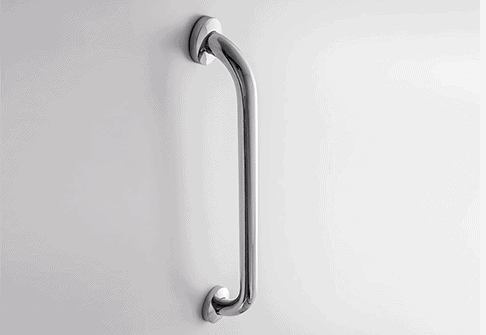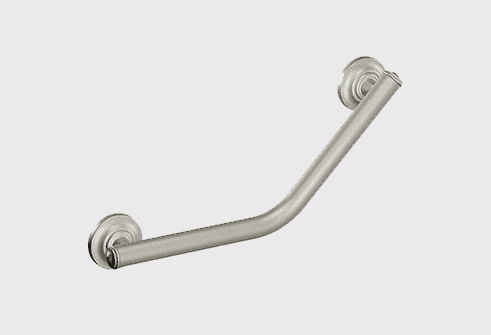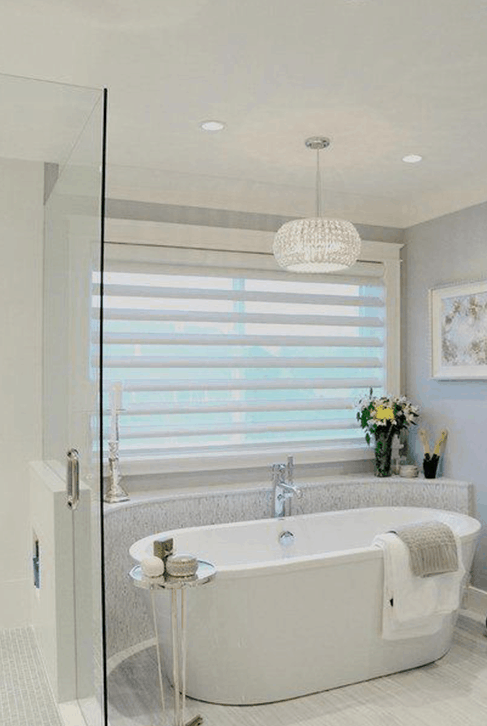Grab Bar Installation
What are the types of Grab Bar?
As people age, the risk of accidents increases, such as falls and slips when using the toilet, shower, or bathroom. These accidents may result in serious injuries such as bone and hip fractures or fatal injuries like head trauma leading to death. Fortunately, we can prevent these accidents from happening by installing safety equipment like grab bars at home.
Grab bars make our lives easier when assisting our aging loved ones in using the toilet or when taking a bath. The point is, navigating through these wet and slippery areas can be tricky for most of us. More so for seniors, pregnant women, and children. That’s why grab bars are essential fixtures to ensure safety at homes. They’re great in helping us perform our daily routines with independence and confidence without other people’s help. Handrails are indispensable aids for public facilities, hospitals, and nursing homes.
What are the types of Grab Bar?
01 Vertical Grab Bar
This grab bar helps with a person’s balance while standing. These rails are much easier to grasp for people with arthritis. But, due to its direction or position, it doesn’t provide enough coverage of safety when you’re walking against the walls. Short upright grab bars are mostly found in the showers or bathrooms. While longer adjustable floor-to-ceiling poles can be used in both bedrooms and bathrooms.


04 Horizontal Grab Bar
This type of bar helps a seated person when rising up. They can easily hold onto it to pull their body upwards to prevent a possible slip or fall. Horizontal grab bars provide the greatest safety by allowing our bodies to rotate as we move, stand, or walk. They are sturdy, making it easier to stand up or get in and out of a wheelchair to the toilet seat or vice versa. They are also installed near bathtubs to help us when we get in or out of it. One disadvantage though, they are uncomfortable with arthritis sufferers.
03 Diagonal Grab Bar
You can buy grab bars in any home improvement store or hardware supplier. Getting products online is gaining popularity because it’s convenient for users. Most grab bars are corrosion-resistant as they’re made from stainless steel. Though there are other metal finishes like brass, bronze, and chrome. Prices and cost of grab bar installation depend on a lot of factors. For example, how many bars are you going to use? If it’s more than one grab bar

How Much Does it Cost to Install
A Grab Bar?
You can buy grab bars in any home improvement store or hardware supplier. Getting products online is gaining popularity because it’s convenient for users. Most grab bars are corrosion-resistant as they’re made from stainless steel. Though there are other metal finishes like brass, bronze, and chrome.
Prices and cost of grab bar installation depend on a lot of factors. For example, how many bars are you going to use? If it’s more than one grab bar, then you can have them installed much cheaper than individually. If you’re installing it yourself, a friend, or a relative, then no problem about labor costs.
ADA Compliance
If you’re planning a toilet and a bathroom remodel, there are many grab bar sizes and construction types in the market. Before buying, you must be able to know if it’s ADA (American with Disabilities Act) Compliant. Bathroom grab bars have typical sizes that range from 12 inches to 48 inches. Their diameter varies from 1-1/4 inches and 1-1/2 inches. It’s best to make sure to check the weight capacity before you buy a grab bar. It must be able to bear a full-body weight capacity of 250 lbs. or more.
Cost
Grab bar’s prices vary from $20 to $600 per piece, depending on the type and brand. Take note that they are pretty simple to install, given that you have the right equipment or tools. You can even mount it yourself or ask a friend or a family member to do it for you. If you need a professional plumber or a handyman to install grab bars, the average cost can be anywhere from less than $100 to $300. Typically, a professional installer would cost you around $60 to $100 an hour. Installation jobs usually take more than an hour.


Where should grab bars be placed?
In general, grab bars are most helpful for the elderly, handicapped, and pregnant women. However, they are also helpful for all, from young to old, disabled or not, at home or in public spaces. These precautionary measures reduce possible accidents resulting in serious injuries. Grab bars are good balance-assist when rising up from a seated position or moving around a tricky area. A person can move around more easily without help from other people using a grab bar.
By practice, stainless steel grab bars are mounted on the wall between 33 to 36 inches from the floor. But for children, professionals install a grab bar at a height between 18 to 27 inches off the floor. Toilets with narrow stalls must have handrails anchored on each side of the walls. These rails usually are 42 inches long, and a plumber will have to fasten them about 12 inches out from the rear wall. In general, a grab bar is usually located where it can best aid users in preventing slips and falls. These are the usual areas we see grab bars fixed in homes or in public:
01 Beside the Toilet Bowl
According to ADA, it is recommended to fasten a 12-inch to 16 inches horizontal grab bar beside the toilet bowl. This will help the user to hold onto it when trying to sit down or stand up. In case there’s no wall beside the toilet bowl, you can opt to install a folding grab bar as an alternative. The folding grab bar needs to be attached to the back wall, and the user can flip it up and down. Take note that it’s not recommended to install any grab bar or use a suction bar when the wall is a glass partition. Glass is not designed to hold weight, thus poses more hazards.
02 In the Shower or Tub Area
You can use and install three grab bars in a tub/shower combo. The straight horizontal bars on the back walls can be 18 inches long. ADA recommends one bar installed at 8 to 10 inches from the rim of the tub. While the other one fastened parallel to it must be 33 inches to 36 inches from the base of the tub. These horizontal bars help users get in and out of the tub. For vertical grip bars, you can use a 12 inches bar and install it under the showerhead. This serves as a support for the person when turning the water on and off or getting out of the shower stalls.
03 Walk-in Showers
You can install two grab bars in walk-in showers. One is a vertical bar at the entry and a diagonal bar near the recessed shelves. The rule of thumb is that grab bars should be fixed on a side wall near a shower seat and back wall.


04 Side Wall of Bathtubs
If your tub doesn’t have built-in grab bars, you can have them installed near the rims on each side of your bathtub. You can also place them near the controls to help you maintain your balance when stepping in or out of the tub.
05 Along Corridors and Walkways
It’s recommended to install a short vertical bar with an 8-inch or 12- inch to the wall next to door frame entrances. Moreover, use a slimmer or sleek grab bar for the corridor if you have a plain wall. Older people will love you for it as they can hold onto it instead of the walls for support and safety.
06 In the Bedroom
For seniors and people who have difficulty with mobility, a floor to ceiling grab bar or a security pole is recommended. Use this to assist the person or the caregiver when the user needs to get out of bed or a chair or transfer to a wheelchair.
Do Plumbers Install Grab Bars?
Usually, a friend or a family member can do it for you since grab bars are fairly simple to install. Many DIY tutorials can guide you with grab bar installation. You can also refer to the installation manual that comes with the product when you buy them. However, professional installers like plumbers are highly recommended to properly install grab bars. This is non-negotiable for commercial and public spaces. They have the expertise and the right equipment to ensure quality work and safety.
Do Grab Bars Need to be Installed in Wall Studs?
A grab bar mounted with studs is way better, sturdier, and safer than using suction cups. An improperly attached grab bar may cause accidents. Plus, it may result in expensive medical costs. So it’s always best to mount a grab bar with wall studs or with wall anchors. Use a stud finder to locate the wall studs, and if you can’t find them, you can use wall anchors. For the anchoring device to work, you need to make sure there is enough room within the hollow area behind the wall.
How to Install Bathroom Grab Bars?
We can’t stress this enough but… ADA and other authorities recommend that you hire a professional handyman or plumber for a grab bar installation. Here’s the thing, trying to DIY may seem like it’s an easy project to do. But what happens when you crack the tiles? Or you used the wrong wall anchors? What if you or someone installed them incorrectly and the grab bar came loose? Can you imagine the harm and danger it may cause just because you wanted to cut costs? Consider other factors when choosing and installing a grab bar.
- Grab Bars
- Drill
- Wall anchors with a minimum of 77-pound load weight (recommended)
- Masonry bit or drill bits (use a bit to drill through the tile)
- Measuring tape
- Long nail
- Hammer
- Screwdriver (optional)
- Level (optional)
